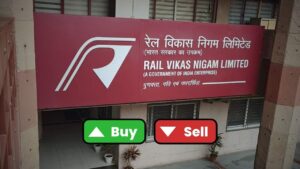Supply chain management has become a critical focus for businesses operating in high-value industries such as retail and telecom. With increasing complexities in logistics, companies are turning to digital transformation strategies to enhance supply chain resilience, optimize costs, and improve operational efficiency. Technologies like SAP Master Data Governance (MDG), SAP S/4HANA, and SAP Integrated Business Planning (IBP) have emerged as essential tools in streamlining logistics, demand forecasting, and vendor management, ensuring businesses can adapt swiftly to disruptions and market shifts.
Arun Chinnannan Balasubramanian has been at the forefront of supply chain transformation, using SAP technologies to drive efficiency and resilience in logistics operations. With deep expertise in supply chain architecture, he has played a pivotal role in implementing innovative solutions such as 3PL diversification, automated master data synchronization, and AI-driven route optimization. “Resilient supply chains are not built overnight. They require a structured approach to integrating data, optimizing logistics, and ensuring real-time visibility across operations,” he explains. His work during the COVID-19 pandemic was particularly impactful, ensuring uninterrupted logistics by onboarding new third-party logistics (3PL) providers through automated master data governance, reducing dependency on a single supplier and mitigating risks associated with supply chain bottlenecks.
His contributions have led to significant improvements in logistics efficiency, with a significant increase in operational agility by diversifying logistics across multiple regional partners. Additionally, by utilizing SAP IBP for demand-driven inventory distribution, he successfully reduced transportation costs by 27%, optimizing delivery routes and reducing supply chain waste. “Data-driven logistics optimization allows businesses to be proactive rather than reactive. When supply chains are resilient, they can withstand disruptions without compromising service levels,” he notes. His integration of geo-spatial analytics with SAP has also enabled dynamic rerouting in case of disruptions, allowing real-time decision-making to improve last-mile delivery performance.
Among his most impactful projects were the enabled businesses to onboard new logistics providers rapidly, reducing supply chain COVID-19 3PL Diversification Initiative risks during lockdowns. “When the pandemic disrupted global logistics, organizations were in need of a fast and efficient way to bring new 3PL partners into their networks. Automating master data governance has made this transition seamless,” he shares. Another key initiative was the implementation of same-day delivery (SDD) services, which required coordinating multiple 3PL vendors across different zones while maintaining standardized procedures for fulfillment efficiency. His expertise also extended to inventory optimization for 2,400+ retail stores, where he developed store-specific grading models aligned with 3PL delivery performance to ensure the right products reached the right locations efficiently.
Ensuring seamless integration of new logistics partners into SAP-driven ecosystems was not without challenges. Standardizing data structures across multiple 3PLs was a key hurdle, as inconsistencies in vendor data often led to delays in onboarding and operations. “Supply chain disruptions are not just about logistics, they are about data governance. Without a unified model, scaling operations becomes nearly impossible,” he explains. His solution involved developing a standardized SAP MDG model that refined vendor onboarding, reducing the supplier setup time from six weeks to less than two weeks. Additionally, he tackled resistance to change in legacy supply chains, ensuring smooth adoption of digital processes by implementing progressive migration strategies that minimized operational disruptions.
Looking ahead, he believes that AI-driven demand forecasting and blockchain-based logistics tracking will redefine supply chain management. “The future of logistics is built on transparency and real-time collaboration. Companies that invest in predictive analytics and automated decision-making will have a competitive edge,” he shares. With the increasing adoption of SAP Extended Warehouse Management (EWM) and AI-driven dispatching tools, he sees an opportunity for businesses to optimize storage space, speed up order fulfillment, and enhance last-mile delivery capabilities.
Arun Chinnannan’s contributions have played a crucial role in shaping the future of SAP-led supply chain optimization, ensuring that businesses can navigate disruptions while maintaining efficiency, cost-effectiveness, and service excellence. As supply chains continue to evolve, his work underscores the importance of integrating technology, data, and strategy to create logistics networks that are resilient, adaptive, and future-ready.












